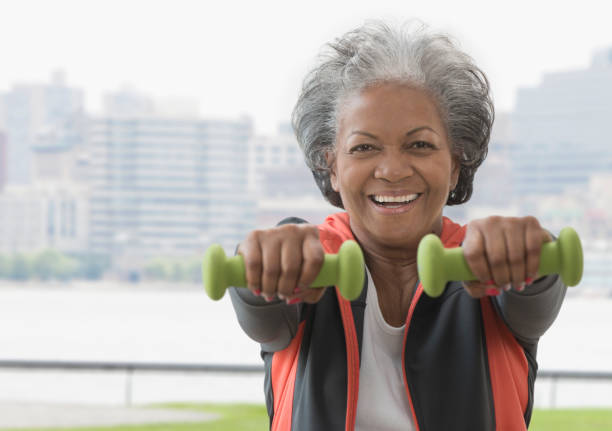
Experts have discovered a cheap, powerful tool that can relieve pain, improve motion, and generally make life a little easier for people with arthritis. It's powerful enough to relieve many symptoms of both osteoarthritis and rheumatoid arthritis, yet safe enough to use every other day. It's convenient and inexpensive, and when used properly, causes no unpleasant side effects. It's called a barbell.
Lifting weights is one of the best ways to care for arthritic joints, says Barbara Resnick, PhD, a nurse practitioner at the University of Maryland School of Nursing in Baltimore. As Resnick reported in the journal Geriatric Nursing, weightlifting has been associated with improved strength, flexibility, and balance among patients with arthritis. (Although it's not as easy to measure, many patients also get a healthy boost of self-confidence.) And as the joint becomes stronger, the pain of arthritis often subsides. "Many of my patients can't believe how much better their pain is" once they start working out with weights, she says.
The biggest challenge is convincing patients to give weights a try. Jane Kowalski,* an 83-year-old living in Baltimore, had a typical response when her doctor suggested strength training for her arthritic knees.
"I was skeptical," she says. "My joints hurt, and I thought I was supposed to rest them."
After her daughter clipped out newspaper articles extolling the virtues of weightlifting, Kowalski decided to follow her doctor's orders. Now she does leg lifts every morning with one- or two-pound weights strapped to her ankles. The routine -- along with her other exercises -- has made the difference between staying active and becoming homebound, she says. In fact, she's planning a four-day trip to the ocean. And, she says, she'll definitely save room in her suitcase for her weights.
As Kowalski can attest, managing arthritis doesn't take gargantuan feats of strength. And contrary to common opinion, weightlifting isn't just for the young. The American College of Sports Medicine recommends weight training for everyone over 50. Even people who are decades over 50 have a lot to gain. Some of Resnick's most dedicated patients took up weightlifting in their hundreds.
RELATED: Weightlifting…For Your Pelvic Muscles!
Getting started
At any age, people should be aware that there's a right way and a wrong way to lift weights, Resnick says. Here are some tips for a safe, productive weight-lifting routine.
1. Get your doctor's go-ahead.
He or she will probably be thrilled to hear about your plan to start strength training. If you have high blood pressure, your doctor may want to run a few tests to make sure lifting weights won't cause a dangerous rise in your pressure.
2. Get professional advice.
A personal trainer or physical therapist can teach you proper weight-lifting techniques. An expert can also help tailor a program that matches your needs and abilities.
3. Warm up first.
Before grabbing your weights, always warm up your muscles with a good stretch. Resnick recommends slowly stretching a joint until it feels a little uncomfortable. Hold the stretch for 10 to 30 seconds and repeat it three to five times.
4. Start slow.
Start with a weight that allows you to do three sets of eight to 10 repetitions with moderate effort. (Some people start with no weight at all.) When these repetitions became easy, move up to a slightly larger weight.
5. Lift weights slowly and evenly.
Sudden jerks or bounces can damage cartilage.
6. Expect a little discomfort.
Your joints may complain at first, but they'll thank you in the long run.
7. Try to go through your joint's entire range of motion.
If bending the joint in a certain way causes too much pain, stick with movements that are more comfortable. Over time, you should try to gradually push your joint until you regain its full range.
RELATED: Weightlifting for Females
8. Give your joints a rest.
If you have rheumatoid arthritis, give your joints a rest during a flare-up. As soon as the pain subsides, you can go back to lifting.
9. Consider isometric exercises.
Workouts that involve pushing or pulling against walls or other immovable objects can strengthen muscles without putting any stress on joints. Isometric exercises can be a good alternative if regular weightlifting causes too much pain.
10. Listen to your body.
If you start pushing yourself too hard, your body will let you know loud and clear. According to the National Institutes of Health, arthritis patients should stop an exercise program if they notice unusual or long-lasting fatigue, increased weakness, decreased flexibility, increased swelling, or pain that lasts for more than an hour after exercising.
With any exercise program, the first step is always the hardest. If you have trouble getting motivated, keep this in mind: Your sore joints won't get better on their own. A good exercise program that includes weightlifting can give you the strength and flexibility you need to keep up with life. The alternative is too painful to consider.









